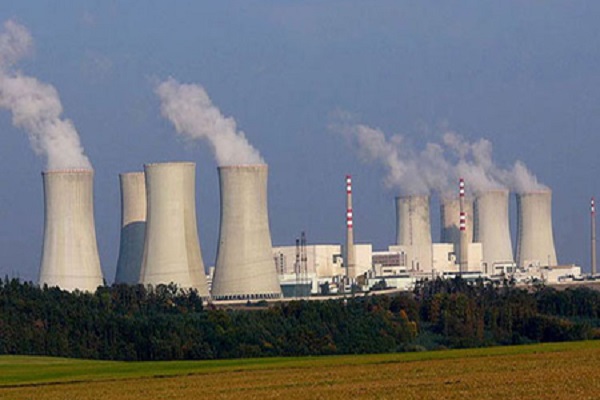Fears of the Omicron virus is limiting oil's upside potential By Mr. Mahesh Kumar, Abans Group

Below is Outlook on Crude Oil by Mr. Mahesh Kumar, EVP & Head Capital & Commodities Market (Abans Group)
Fears of the Omicron virus is limiting oil's upside potential
Crude oil prices are somewhat higher ahead of this week's OPEC meeting, but they are still under pressure due to new fears that the new omicron covid type may damage oil demand once more. WTI Crude oil is currently trading at $68.69 per barrel, up slightly from yesterday's low of $64.43 per barrel, but still much below the recent high of $84.97 per barrel set on November 10th.
Crude oil prices are under pressure due to fears that the introduction of a new Covid type could force countries to implement lockdowns and travel restrictions, stifling economic activity and reducing energy demand. Other countries have proposed travel restrictions, like Israel and Japan, which have already closed their borders to new international arrivals. In addition, Moderna's CEO indicated on Tuesday that existing Covid vaccinations will be less effective against the omicron version, and that developing new effective vaccines could take months.
On the economic front, the November MNI Chicago PMI dropped -6.6 to a 9-month low of 61.8, missing expectations of 67.0. In addition, consumer confidence in the United States dipped -2.1 in November, falling to a 9-month low of 109.5, falling short of forecasts of 110.9. China's November manufacturing PMI increased by 0.9 points to 50.1, exceeding estimates of 49.7.
The Organization of Petroleum Exporting Countries (OPEC) will convene on Wednesday, ahead of an OPEC+ meeting on Thursday. OPEC+ is anticipated to postpone plans to add 400,000 barrels per day of supply in January due to the risk of demand being harmed by travel restrictions imposed to combat the spread of the Omicron strain. However, numerous OPEC+ ministers have stated that there is no reason to reverse direction. This news has a positive impact on crude oil prices.
OPEC+ delegates last Friday who said that when the group meets Thursday, it is inclined to ditch their plans to boost crude production in January by +400,000 bpd. OPEC+ is deciding against raising its crude production levels after the world's largest crude consuming countries (the U.S., China, Japan, and India) went ahead with their plans for a coordinated release of crude supplies from their respective reserves. Also, concern that global energy demand may suffer from the new Covid variant is giving OPEC+ pause in raising its oil production.
On Monday, Iran started talks with Western nations to resurrect the 2015 nuclear deal. If some sanctions on Iran are lifted, crude oil prices will almost certainly fall.
The discharge of the SPR has a negative impact on crude oil prices. Last Tuesday, the United States stated that it would release 50 million barrels of crude from the SPR as part of a coordinated effort with other countries to cut oil prices. China will release at least 7.33 million bbl, the UK will release 1.5 million bbl, and South Korea will release an unspecified amount of crude. India said it would release 5 million bbl, Japan said it would release several days' worth of volume (approximately 5 million bbl), China said it would release at least 7.33 million bbl, and the UK said it would release 1.5 million bbl.
Crude oil prices are expected to take a new direction after the release of the Weekly EIA crude oil inventory data later today. A drop of -1.5 million bbl is expected, according to the consensus. The American Petroleum Institute (API) recorded a crude oil inventory draw of 747,000 barrels. Since the start of the year, US crude inventories have dropped by 57 million barrels.
According to the weekly EIA data released last Wednesday, U.S. crude oil stockpiles were -7.0 percent lower than the seasonal 5-year average on November 19, gasoline inventories were -5.5 percent lower, and distillate inventories were -7.5 percent lower. In the week of November 19, crude oil output in the United States increased by 0.9 percent w/w to 11.5 million barrels per day, down 1.6 million barrels per day (or 12.2%) from the record high of 13.1 million barrels per day set in February 2020.
Last Wednesday, Baker Hughes announced that active U.S. oil rigs increased by 6 rigs in the week ending November 26 to a 19-month high of 467 rigs. Active oil rigs in the United States have climbed substantially from a 15-year low of 172 rigs last August, indicating an increase in crude oil production.
The net long of crude oil futures fell -8 128 contracts to 407 657 contracts, according to the CFTC Commitments of Traders data for the week ended November 23. Shorts gained +8 545 contracts, while longs gained +417 contracts.
WTI Crude oil prices are expected to remain under pressure as long as they remain below a crucial resistance level of $70.2-$72.4 per barrel, with immediate support indicated around $63.34-$60.49 per barrel.
Above views are of the author and not of the website kindly read disclaimer




















